
One of the best ways to experience a culture is through its local cuisine. Every South American country has its own famous sauces that are served alongside popular and traditional dishes.
South America offers a wide range of mouth watering sauces that curious cooks, travelers, and foodies shouldn’t miss out on. Learn how to make our favorite South American sauces at home and then plan your next trip to try them for yourself!
Aji, or chili pepper, is widely used in a variety of Peruvian sauces and dishes. Authentic Peruvian recipes use many different chili peppers, such as aji limo, aji charapita, and aji panca. However, aji amarillo is one of the most common and well-loved. On the Scoville scale, this chili’s spice level is similar to cayenne or tabasco.
In the case of the Peruvian aji amarillo sauce, this yellow chili pepper is the main ingredient. It is believed that the sauce originates from the Quechua people living in the Andes where the chili grows. The freshly made sauce is found alongside chicken and fries in pollo a la brasa restaurants and is also a key ingredient in a popular Peruvian recipe, aji de gallina, a pulled chicken stew. In addition to chicken, the sauce also pairs well with vegetables and other meats.
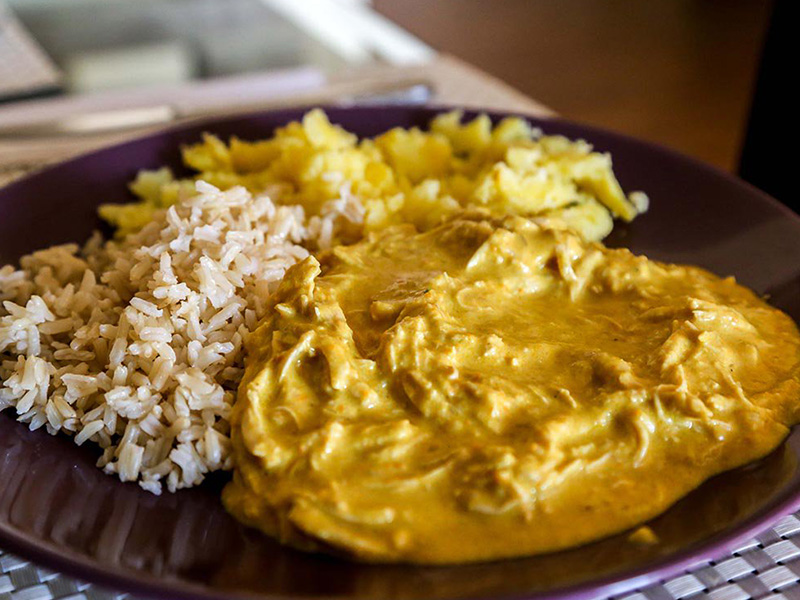
Aji de gallina with aji amarillo sauce. Photo by ta@keshi kimi on Wikimedia Commons.
If you can’t find fresh aji amarillo, look for jarred aji amarillo paste in specialized markets or online. If using the paste, jump ahead to step 4.
This sauce can be refrigerated for up to 3 days.
Huancaina sauce is another popular Peruvian yellow pepper sauce. Along with the chili pepper, queso fresco, a mild and unaged white cheese, is the star. This sauce is typically served over boiled potatoes in a dish known as papa a la huancaina.
The adjective “huancaina” is used for people and things that come from Huancayo, a city in the Peruvian Andes. However, Lima claims to be the origin of huancaina sauce. While its exact origin is not very clear, it is somehow connected to the Lima-Huancayo railroad. It is possible that women from Huancayo served the construction workers potatoes with huancaina sauce while they were building the railroad. It is also possible that huancaina sauce was served at the railway stations between the two cities. However the name came about, huancaina sauce is now eaten all across Peru.
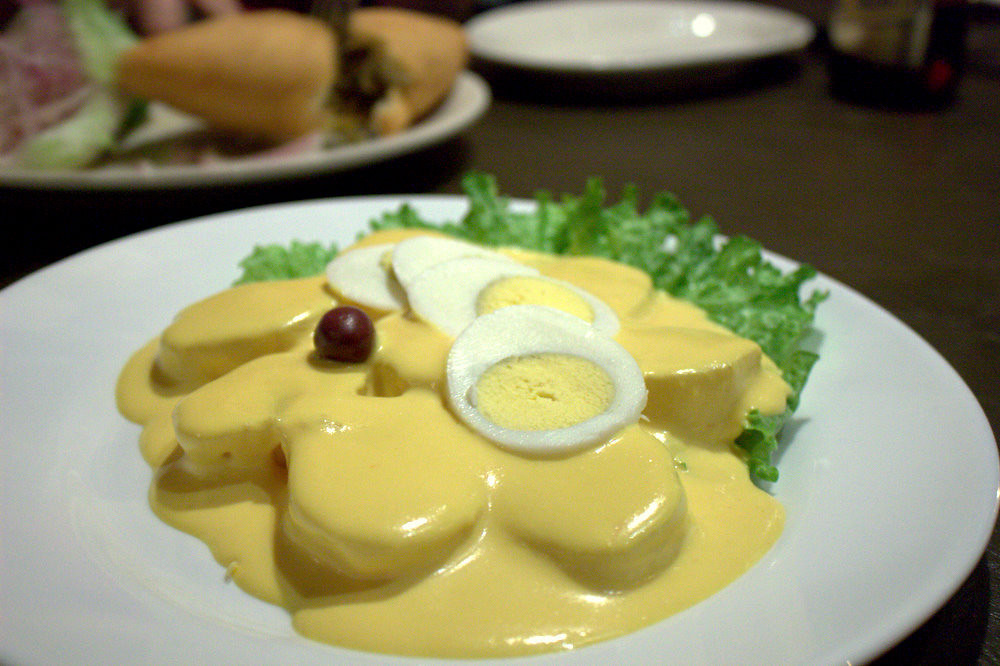
Papa a la huancaina. Photo by Luis Tamayo on Flickr.
Lima Tours:
In addition to aji amarillo, red rocoto peppers are common in Peruvian cuisine. The pepper is used in dishes such as ceviche, soup, salad, and stews. Stuffed rocoto, or rocoto relleno, is a very popular dish from Arequipa. According to the Scoville scale, rocoto peppers are 4 to 40 times hotter than jalapeños.
You can also find rocoto in a creamy sauce accompanying any type of dish. This South American sauce is fresh, but very spicy. It pairs well with meat, fish, fries, and vegetables.
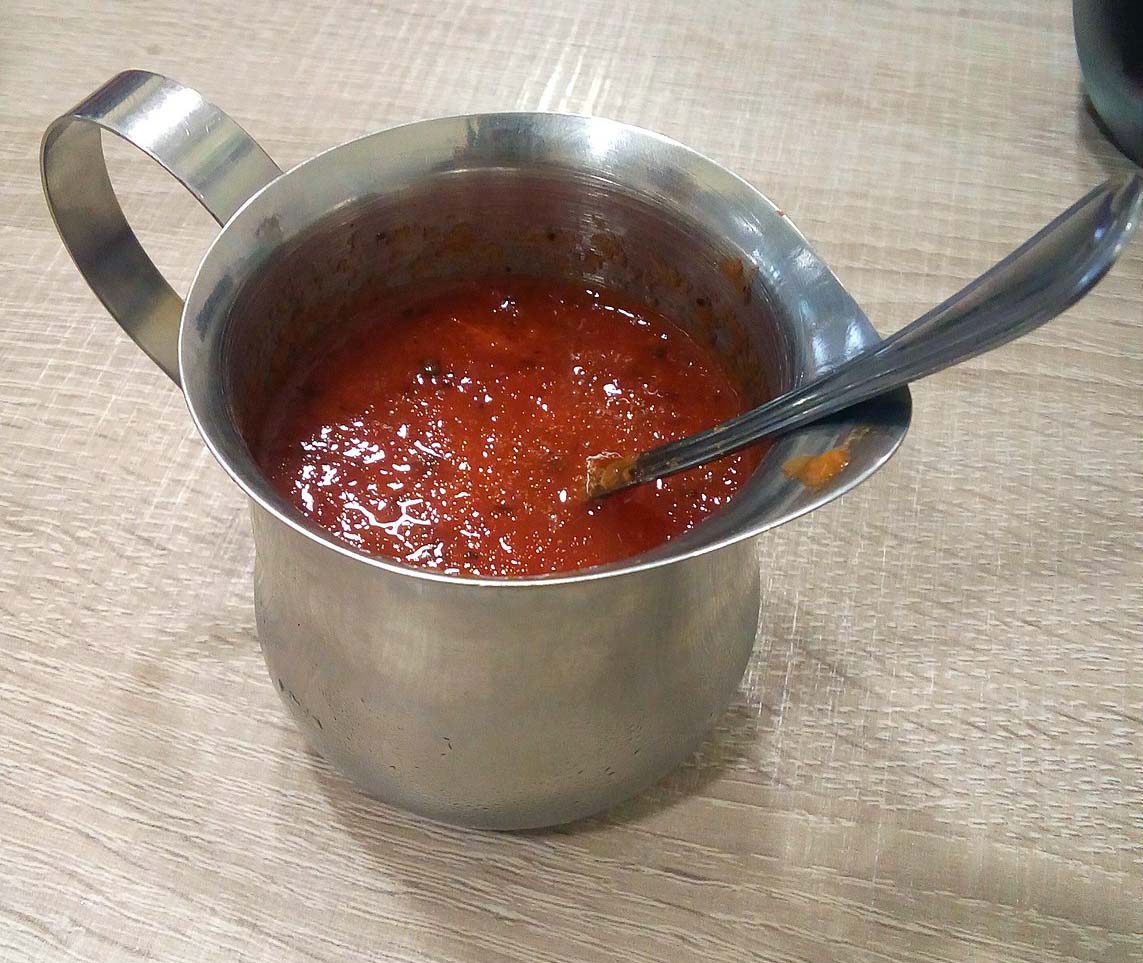
Spicy rocoto sauce. Photo by MiguelAlanCS on Wikimedia Commons.
Tamarillo, also known as tree tomato, is a fruit that grows in Ecuador. It is often used to make juices and desserts, but is also a key part of Ecuador’s famous hot sauce. Tamarillos come in three colors: yellow, orange, and red. The more yellow the fruit, the sweeter the taste. The skin is thick and bitter. The pulp is the delicious part of this fruit. Its flavor is an intriguing cross between passionfruit, tomato, and cucumber.
To make tamarillo hot sauce, the tree tomatoes are cooked with hot chili peppers. The fruit and peppers are then blended with onions, garlic, lime juice, and cilantro for a unique taste.
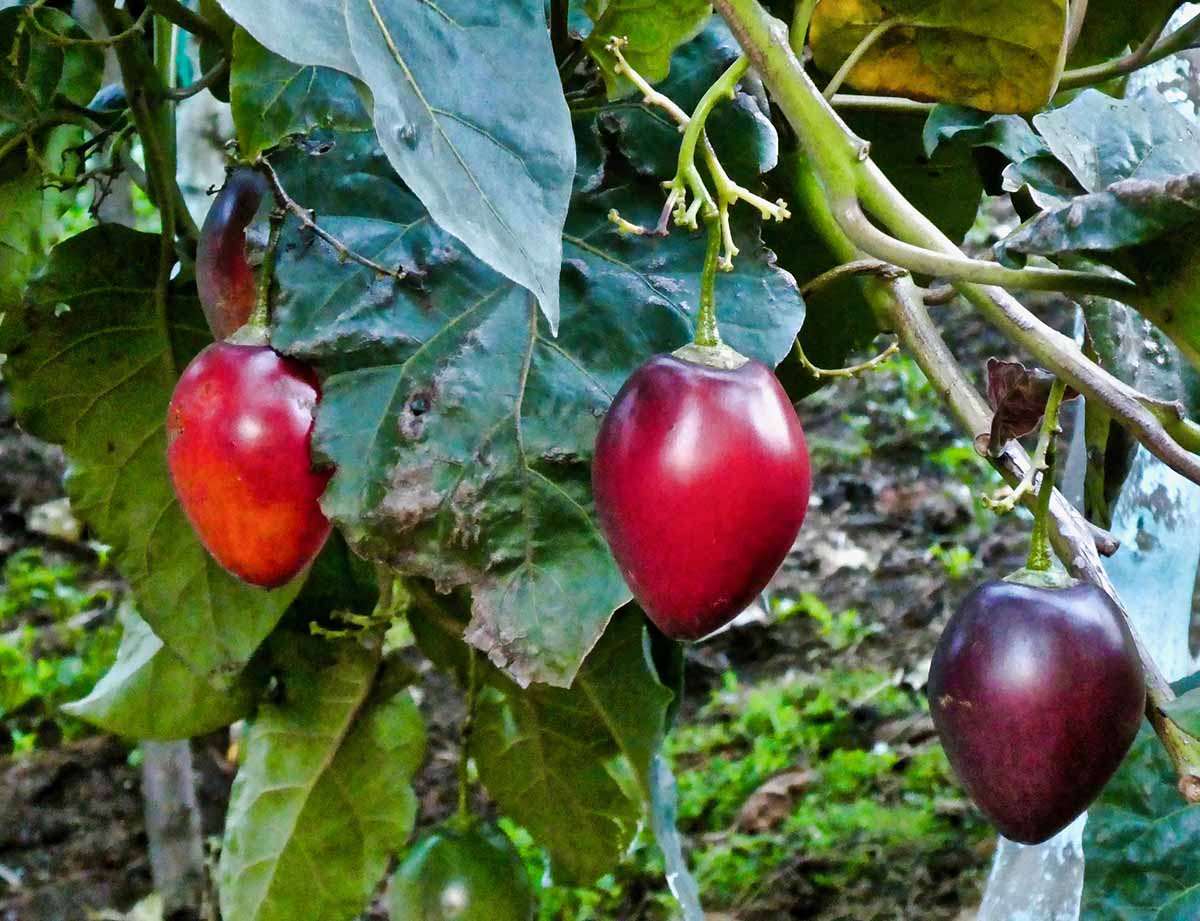
Tamarillo fruits. Photo by F Delventhal on Flickr.
Chimichurri is without a doubt the most popular sauce in Argentina. Traditionally, it is used as a dip or as a meat marinade. It most likely originated in the Argentinian countryside where gauchos seasoned their meat with the sauce and cooked it over a fire. Linguists believe the name comes from the Basque word tximitxurri, meaning hodgepodge or mixture. Others believe it comes from an Englishman named Jimmy who joined Argentina’s army during the war for independence. They claim “Jimmy’s curry” became chimichurri.
Not a controversy are the ingredients. Chimichurri verde, the green version, has parsley, garlic, oregano, olive oil and red pepper flakes. In chimichurri rojo, the red version, red bell pepper and tomato are added. Both sauces are uncooked.
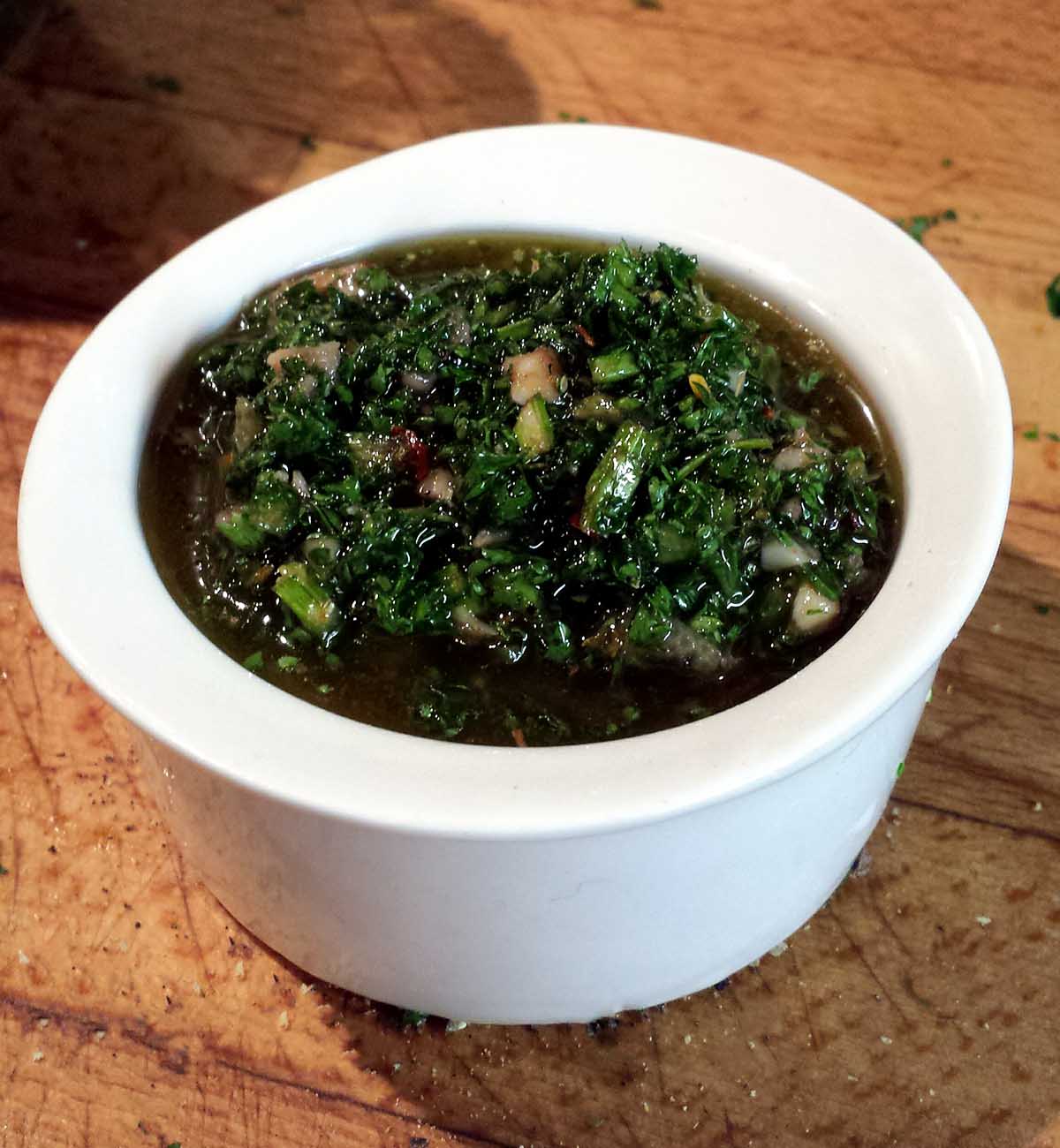
Green chimichurri. Photo by Dominic Lockyer on Flickr.
Salsa golf was invented by Luis Federico Leloir in the 1920s. While dining with friends at a golf club in Mar de Plata, he was unhappy eating shrimp with mayonnaise. Eager to create a better option, he asked the waiter to bring him a range of ingredients to mix together. Following many attempts, the mixture he liked best was mayonnaise with ketchup, which his friends named salsa golf.
This South American sauce originated in Argentina, but is now found in Uruguay, Peru, Colombia, and elsewhere. Salsa golf is often used as a salad dressing, as well as a dip for meat, shrimp, and fries.
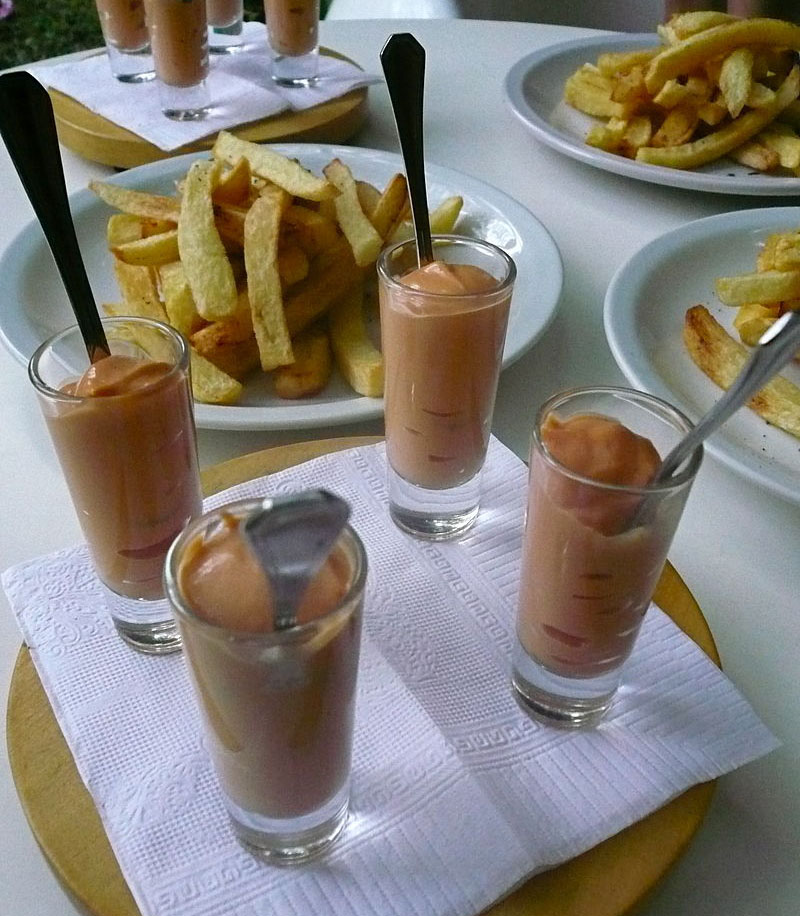
Salsa golf. Photo by dana robinson on Wikimedia Commons.
Chileans commonly use pebre sauce on bread, with empanadas, or on choripan, a sausage sandwich. The name derives from Catalan where pebre means pepper. Catalan engineers and masons went to Santiago to build channels, walls, and bridges around the Mapocho River. These migrants brought the recipe with them that subsequently spread across the country. Traditionally, the main ingredients are olive oil, onion, garlic and chili peppers. Some variations also use tomatoes.
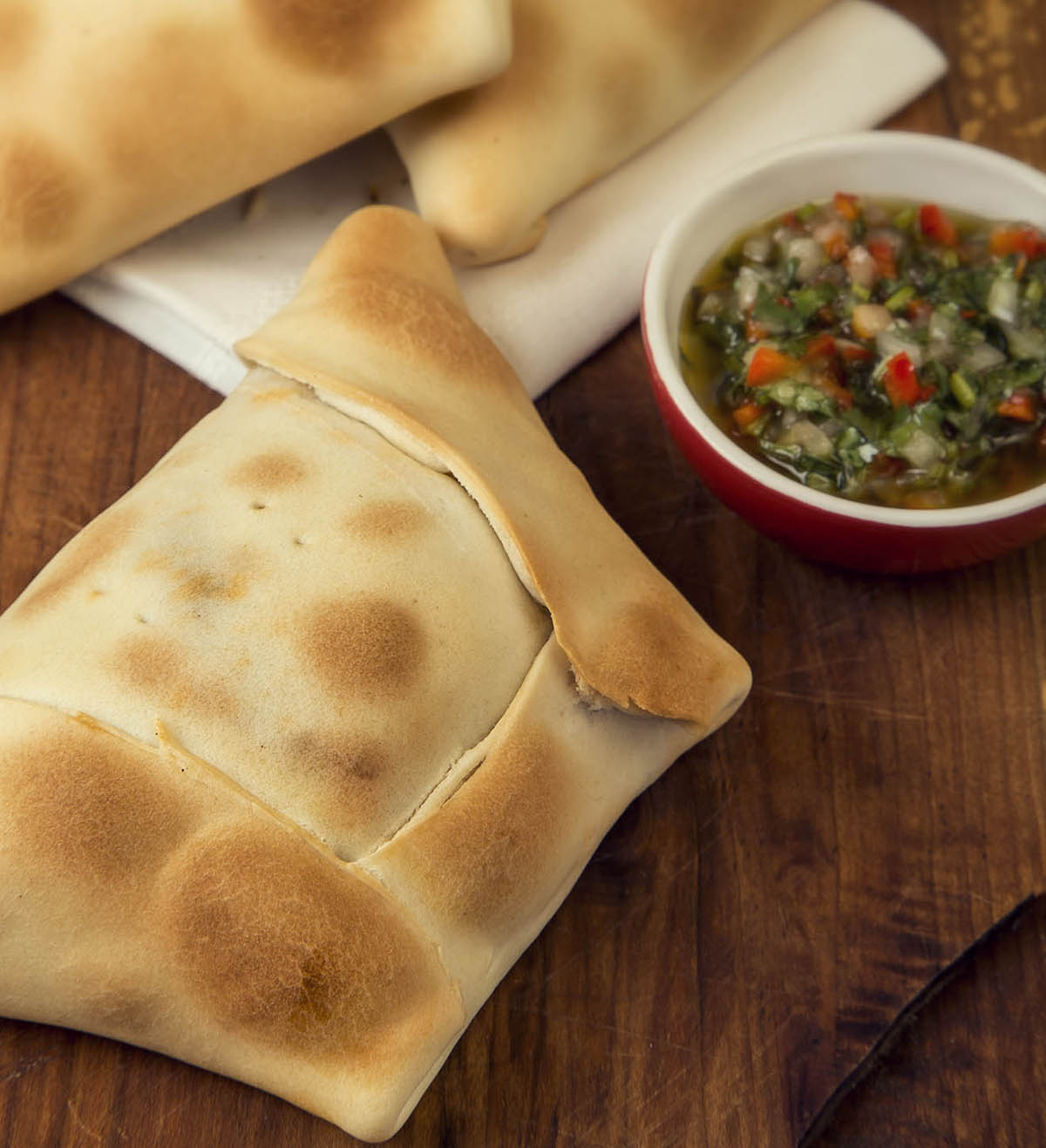
Empanadas with pebre sauce. Photo by Nicolas Barnao on Wikimedia Commons.
For the next South American sauce, we head to the Amazon jungle. Tucupi sauce originates in the Brazilian Amazon where the main ingredient, manioc, grows.
The local legend is that Jacy (the Moon) and Iassytatassú (the Morning Star) went to the center of the earth. On their journey, the snake Tyiiba bit Jacy’s face. After the bite, Jacy’s tears fell on a manioc plant. As a result, every time a manioc is used, her tears (the yellow tucupi liquid) are visible. Today, you can still see the snake’s bite marks on the moon.
The most popular dish is certainly pato no tucupi, a duck dish with tucupi sauce. It is also common to use tucupi with fish.
To make tucupi, the manioc root is peeled, grated, and finally, juiced. Tucupi is also a by-product of manioc flour production. To separate the starch from the liquid, it has to rest for several hours. Raw tucupi is toxic as it contains hydrocyanic acid. To remove the acid, the juice has to slowly cook for 3-5 days. Traditionally, tucupi is seasoned with garlic, basil, chicory, and salt.
Due to the lengthy cooking time to remove the toxin, we recommend traveling to Brazil to try this sauce instead of making it at home.

Tucupi sauce. Photo by Roberto de vasconcelos on Wikimedia Commons.
Commonly served with churrasco, Brazilian barbecue, molho a campanha is popular all across Brazil. In short, molho a campanha is similar to Mexico’s pico de gallo. This vinaigrette is easy to prepare and pairs well with grilled meat, fish, or vegetables.
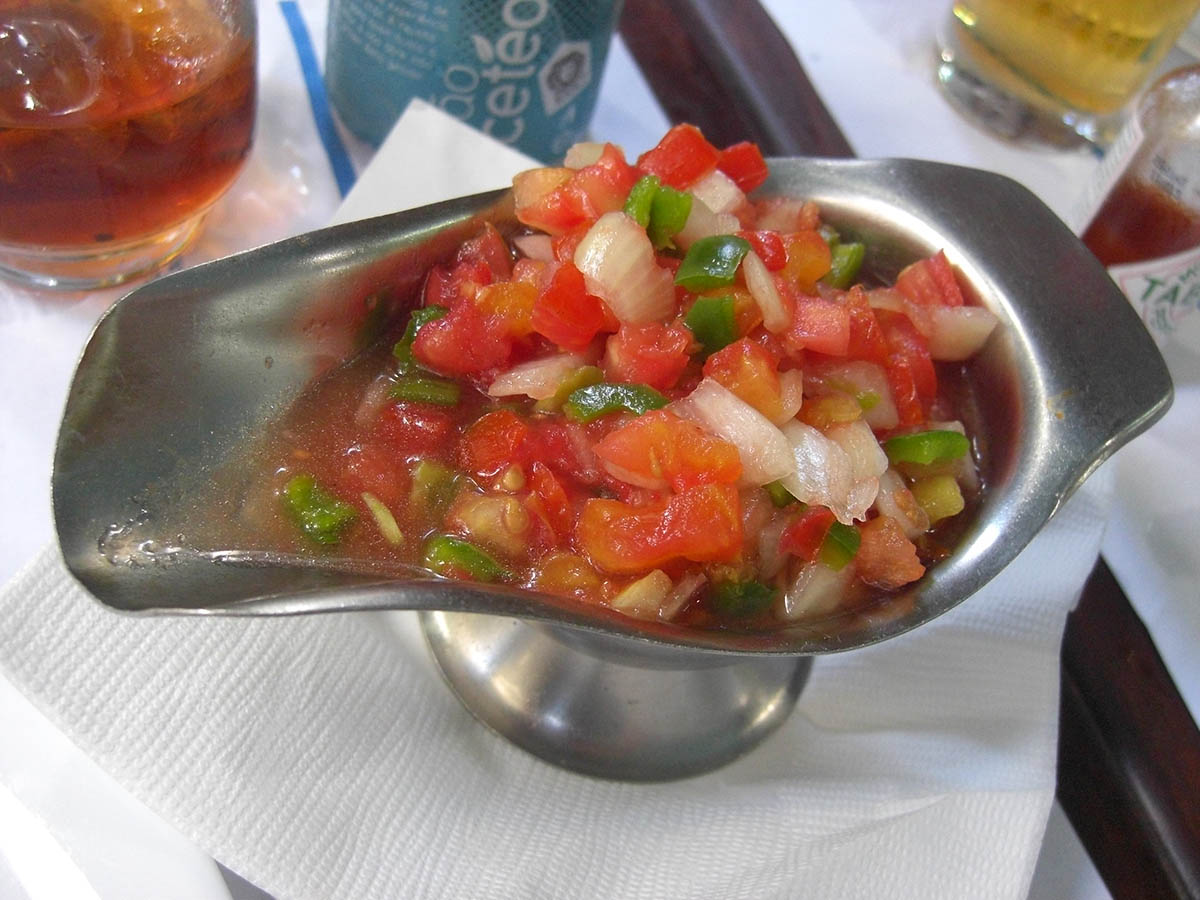
Molho a campanha sauce. Photo by Andy Bullock on Flickr.
To round out the list of South American sauces, we head to landlocked Bolivia for one last sauce packed full of spice. Llajua, also spelled “llajwa,” is Bolivia’s signature hot sauce that is popular throughout the country. Traditionally, it is served as a dip for potatoes or bread. Nowadays, Bolivians also add it in soups, on grilled meats, and on vegetables. The spiciness comes from the locoto pepper, comparable to the Peruvian rocoto. Other ingredients include tomato, onion, and a local herb, quillquiña, similar to cilantro.
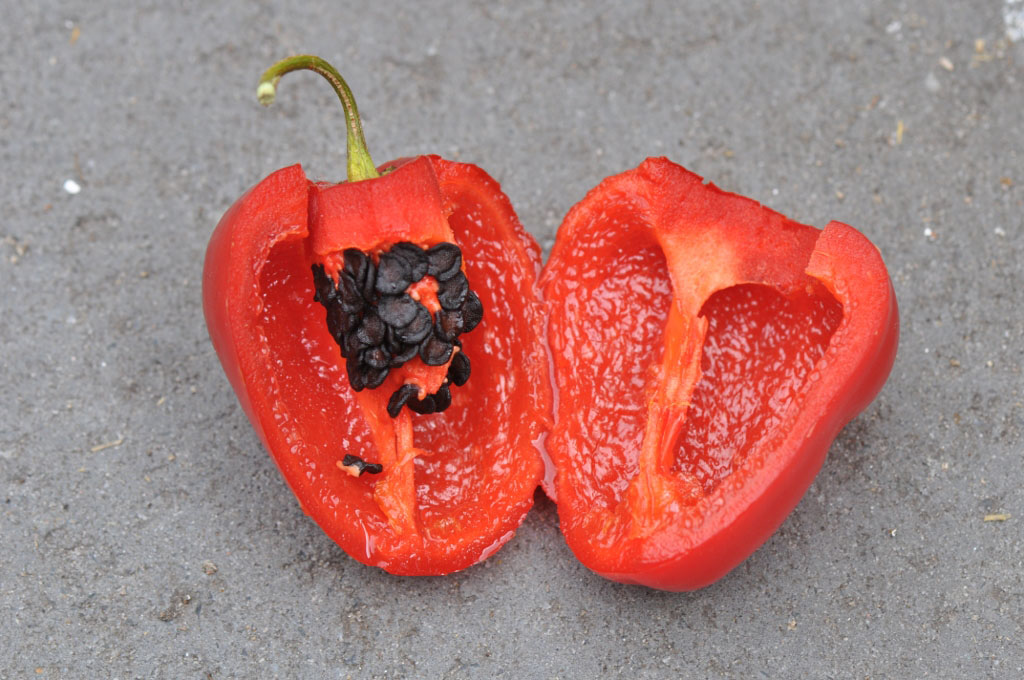
Rocoto/locoto pepper. Photo by graibeard on Flickr.
Curious cooks should make these South American sauces at home. Curious travelers and foodies should visit South America to taste these delicious sauces for themselves. Contact our team of experts to plan yourPeru trip.



Email: [email protected]
Sign up to receive our newsletter for great articles, stunning photos, and special deals.